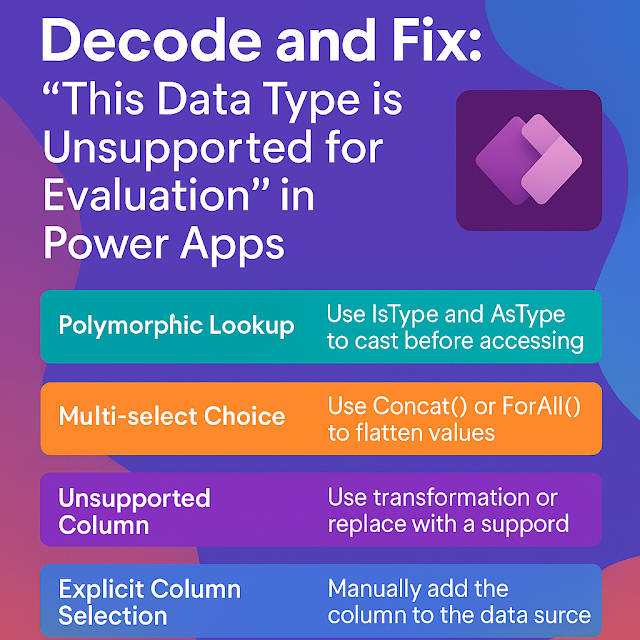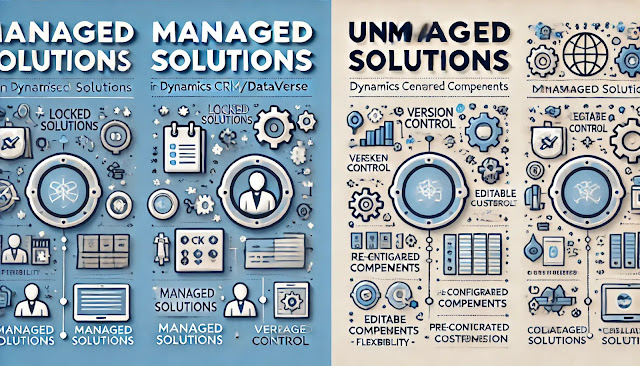Dynamics 365 Field Service : Manage working offline
In today’s fast-paced service industry, staying connected is critical—but what happens when your field technicians are working in remote areas without a stable internet connection? That’s where offline capabilities in Dynamics 365 Field Service come into play. With powerful offline sync and mobile data caching, technicians can continue their work without interruption, even when network access is limited or non-existent.
This blog will walk you through what offline mode means in Dynamics 365 Field Service, how it works, and best practices for managing it.
What is Offline Capability in Field Service?
Offline mode allows field technicians to use the Field Service (Dynamics 365) Mobile App without being connected to the internet. They can:
- Access customer information, work orders, and asset details
- Update service tasks, capture signatures, and log notes
- Upload images and capture time entries
- Work with forms, views, and even custom business logic
Once the technician regains connectivity, the data syncs back to the server automatically—ensuring no data is lost and no task is delayed.
How Does It Work?
The offline experience is powered by the Power Platform Mobile Offline Profiles, which determine:
- Which tables and fields are available offline
- How much data is downloaded (filters/conditions)
- Which business rules and forms are used
- How frequently the data is synced
Key Components:
1. Mobile Offline Profile
Admins define what data to make available offline. This is done using:
- Sync filters (e.g., only work orders assigned to the logged-in technician)
- Entity configurations (Accounts, Contacts, Work Orders, etc.)
2. Mobile App (Power Platform)
The Field Service mobile app (available on iOS, Android, and Windows) handles:
- Local data caching
- Task execution and data entry
- Sync logic when online
3. Delta Sync
Only changes since the last sync are downloaded—reducing data load and bandwidth usage.
What Technicians Can Do While Offline
Here’s a snapshot of common actions a technician can perform in offline mode:
Managing Data Security and Sync
Security is a major concern for offline usage. Field Service uses:
- Role-based security to control offline access
- Row-level filtering so users only see what they’re authorized to view
- Data encryption on the mobile device
Syncing is seamless and happens in the background. If there are sync errors, the app provides error messages and retry options for users.
Setup Steps for Admins
1. Create a Mobile Offline Profile
Go to Power Platform Admin Center → Environments → Settings → Users + Permissions → Mobile Offline
2. Define Entities and Relationships
Include all related data (e.g., Accounts, Contacts, Products)
3. Configure Filters
Example: Only download work orders where `Owner = Current User`
4. Publish the Profile
5. Assign to Security Roles
Only users with the profile and necessary permissions will get offline data
Best Practices
Here are some tips to optimize offline management:
- Minimize data volume: Use filters to download only what's needed.
- Test offline sync regularly with real-world use cases.
- Educate technicians on how to manually sync and interpret error messages.
- Schedule sync during off-peak hours for large updates.
Real-World Scenario
Scenario: A technician travels to a rural oil rig site with no cellular coverage.
- Before the trip, the app syncs assigned work orders, customer and asset data.
- Onsite, they complete checklists, record parts used, and get customer sign-off.
- Once back online, all data syncs back to Dynamics 365, triggering follow-up workflows and invoicing.
No disruptions. No data loss. No time wasted.
Summary
Offline capabilities in Dynamics 365 Field Service are more than just a nice-to-have—they’re a mission-critical feature that ensures field teams remain productive regardless of connectivity. With proper configuration and training, offline mode transforms Dynamics 365 into a truly mobile-first, resilient solution.













Comments
Post a Comment